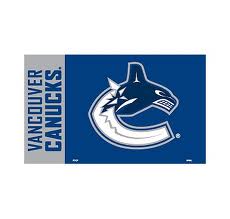Concussion – getting hockey players healthily back on the ice
 Here in Vancouver we are in the midst of hockey fervour, as the Vancouver Canucks are in the chase for the the 2011 Stanley Cup. As the series heads to the finish, several players are off the ice suffering from concussion, an injury all too common in this contact sport.
Here in Vancouver we are in the midst of hockey fervour, as the Vancouver Canucks are in the chase for the the 2011 Stanley Cup. As the series heads to the finish, several players are off the ice suffering from concussion, an injury all too common in this contact sport.
Deciding if a player is ready to return to the ice has been left primarily to each team’s physician, with no standardized across-the-sport method to assess when the time is right.
“Premature return to a sport after concussion greatly increases the risk of a follow up concussion, with more devastating results than the first concussion,” says Willer, who has done extensive research on hockey injuries. “We believe this approach could change the way professional and amateur sports team physicians make decisions about concussion recovery.
“For a number of years,” Barry Willer, PhD, UB professor of psychiatry and rehabilitation medicine relates that “the consensus has been that players are finally ready to return when they can exercise to the level of their sport without exacerbation of symptoms. In the past how a team physician and the team trainer made this decision was left to chance.
“Some team officials would ask the player to skate hard or run fast at a practice and then ask them if they had any symptoms. There was no systematic nature to the decision, which is so critical to the health of the player.”
The UB study was conducted in a consecutive sample of 21 athletes and non-athletes who came to UB’s concussion clinic. The test, developed at the clinic, uses a single approach to assess readiness to return to the sport.
Athletes are evaluated while exercising on a treadmill, as the angle of the treadmill increases the workload, and are watched carefully for any signs or symptoms of exacerbation as they exercise to voluntary exhaustion.
Athletes are reevaluated after 1-2 weeks of increasing exercise
To confirm reliability, 10 participants were videoed during the exercise sessions. The videos were viewed by 32 health care professionals who were blinded to the assessment of other professionals.
Willer reports that the assessment procedure was found to be consistent over time. “We obtained the same results regardless of who made the assessment. This controlled exercise assessment procedure is the only approach to determining readiness to return to play that has been proven to be reliable.
“Another advantage of this assessment procedure is that it can be carried out by any physician, physical therapist or athletic trainer with a minimum of training, as long as they have access to a treadmill and a heart rate monitor.”
The group is developing a web-based training program on the assessment procedure and expects to have it online shortly.
The regimen, supported in part by the Buffalo Sabres Foundation, is described in a recent issue of the Clinical Journal of Sport Medicine. Barry Willer, PhD, UB professor of psychiatry and rehabilitation medicine, is senior author on the paper
